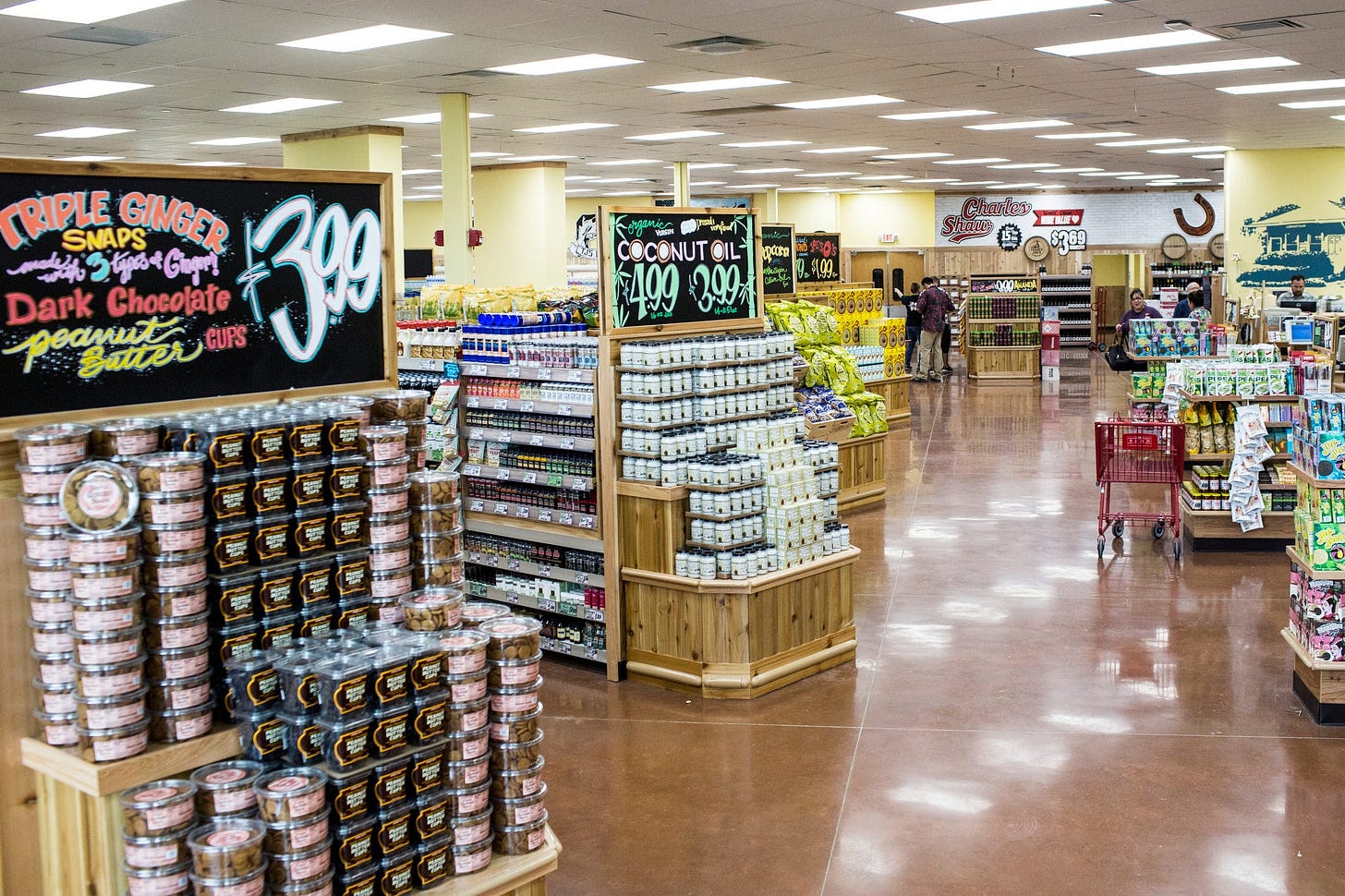This is part 1 in a series of on-the-ground, outsider perspectives on American consumer culture, identity and self-expression. Notes and observations from a week-long trip to California.
There’s a cold hostility to Los Angeles’ urban grid - a concrete sprawl designed first and foremost for cars, brutally unkind to anyone without reliable access to an automobile. With the abundance of parking spots next to every building and a committed disregard for the pedestrian experience, with no sidewalk or inviting shopfront in sight, there’s some truth to Scottish comedian Limmy’s observation that all of America ‘looks like the back’.
This aggressively functional concrete exterior stands in stark contrast to the warm, friendly (if not often superficially saccharine) customer-centric interactions that greet visitors the moment they step into any restaurant, hotel lobby or retail destination.
There’s one retail spot that is always obligatory during my visits to the states: Trader Joe’s. TJ’s is a staple grocery chain (there are almost 200 of them in California alone), but it’s also more than that. It’s supermarket utopia.

It is said that Russian president Boris Yeltsin's wide-eyed trip to a Clear Lake grocery store in 1989 led to the downfall of communism. As he roamed the aisles of Randall's, he nodded his head in amazement, telling his fellow Russians in his entourage that if their people saw the conditions of U.S. food stores, "there would be a revolution."
Europeans, limited to either bare-bone budget grocers or stuffy upmarket options, also often reminisce about their similarly euphoric food store experiences across the pond.
Stepping inside Trader Joe’s, it’s easy to see why. Shelf items are elevated to quirky delights (cowboy caviar, mini ice cream cones, kung pao cauliflower, Snoop Dogg-endorsed Cali reds). A technicolour medley of corn-based snacks, frozen products, alcoholic beverages, spice mixes and ready-to-eat meals - all Trader Joe’s branded - feels excitingly varied yet part of the same, consistent Trader-Joe’s-verse. If it weren’t for the price tags and check-out staff, this place could be mistaken for an Andy Warhol exhibition - consumer culture elevated into an expression of art, each item a celebration of peak capitalism.
So it’s no surprise that supermarkets have often played an important role in pop cultural depictions of modern American life, both celebratory and scathing. The bright, colourful aisles of grocery stores are never merely a transactional space to purchase goods - they act regularly as a backdrop to the full range of human emotion, from love at first sight (My Blue Heaven), angry spats (Father of the Bride), melancholy meanderings (Drive) and even ecstatic dance.
In Don DeLillo's 1985 novel White Noise (also recently adapted for film by Noah Baumbach), the supermarket takes on an almost spiritual significance.
The novel’s plot is centred around a college professor and his family who live in a town where a hazardous chemical cloud appears. It explores the family's struggles to grapple with their newfound fear of death, as well as their attempts to make sense of their lives in the face of mortality. In the middle of this apocalyptic event, the grocery store becomes a brightly lit refuge of familiar comforts - portrayed by the protagonist as a heavenly body, its sliding doors the pearly gates, promising comfort in consumption, a rare place where no one leaves unsatisfied, despite all the chaos and danger present in the outside world.
The role of the American supermarket as a therapeutic refuge has recently taken on a particularly pertinent role. Beyond the parking lot of the mall strip, reminders of the assorted evils and crises prevalent in the United States are on display at every street corner - homelessness, the drug epidemic, racial inequality, the ominous sirens of police cars everywhere.
In Europe, supermarkets tend to reflect the state of society. As inflation increases, the more barren my local Netto becomes. Every UK supermarket seems to have doubled down on promising “more for less” for cash-strapped shoppers in the age of austerity.
But beyond the lavender-scented entrance to Trader Joe’s, you’re transported to another world - a temporary escape from reality. For a brief moment, between the shelves of Dark Chocolate Peanut Butter Cups and Butternut Squash Mac & Cheese, it feels like all your dreams and wishes can come true.
*side note: Off Magazine #3 now on newsstands (and online)*
The latest issue of Off Magazine, a print-only publication dedicated to stories exploring movement, nature, design, sustainability and the human psyche - is now on sale. For each issue, I contribute the ‘zeitgeist’ column: a snapshot of the cultural landscape related to the theme of each issue.
Issue #3 investigates what it means to be wild - with this in mind, I take readers through a whirlwind journey across film, literature, music and TikTok trends in an attempt to explain our complicated love affair with chaos.
The latest issue can be purchased online and found on selected newsstands globally.





